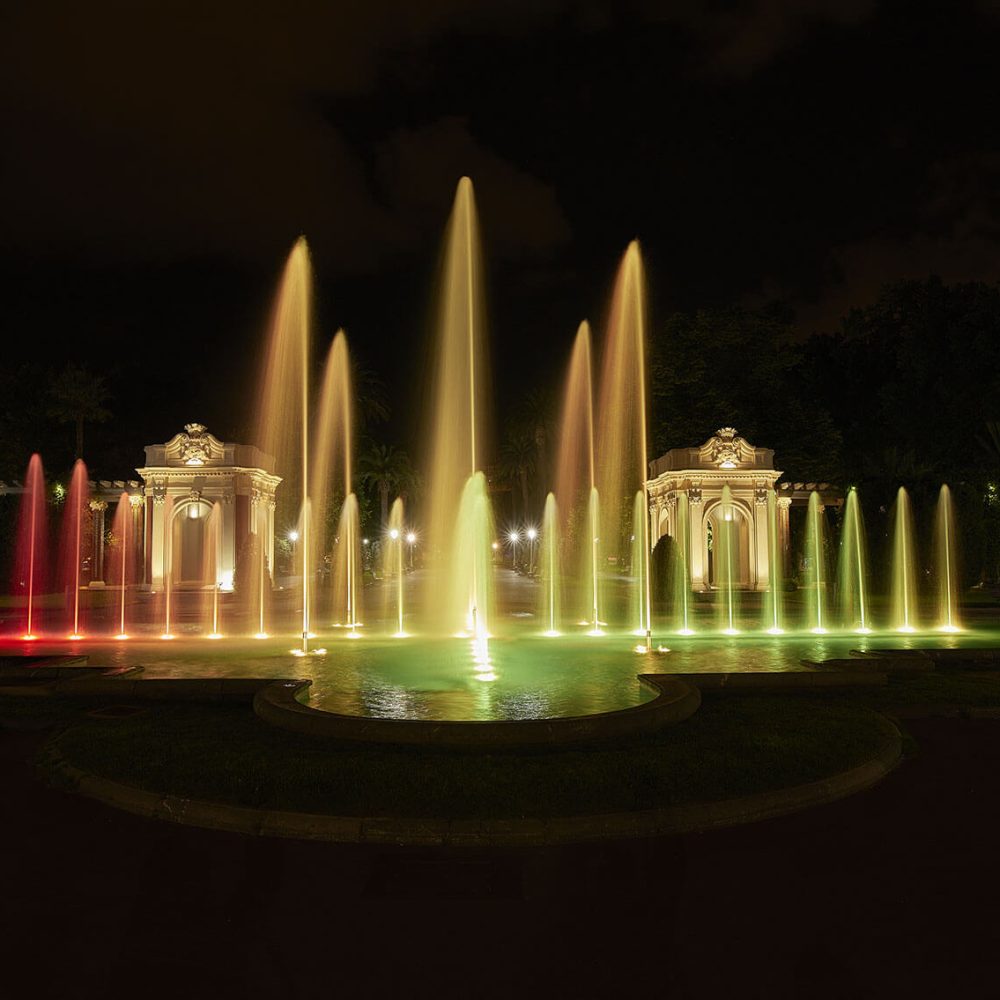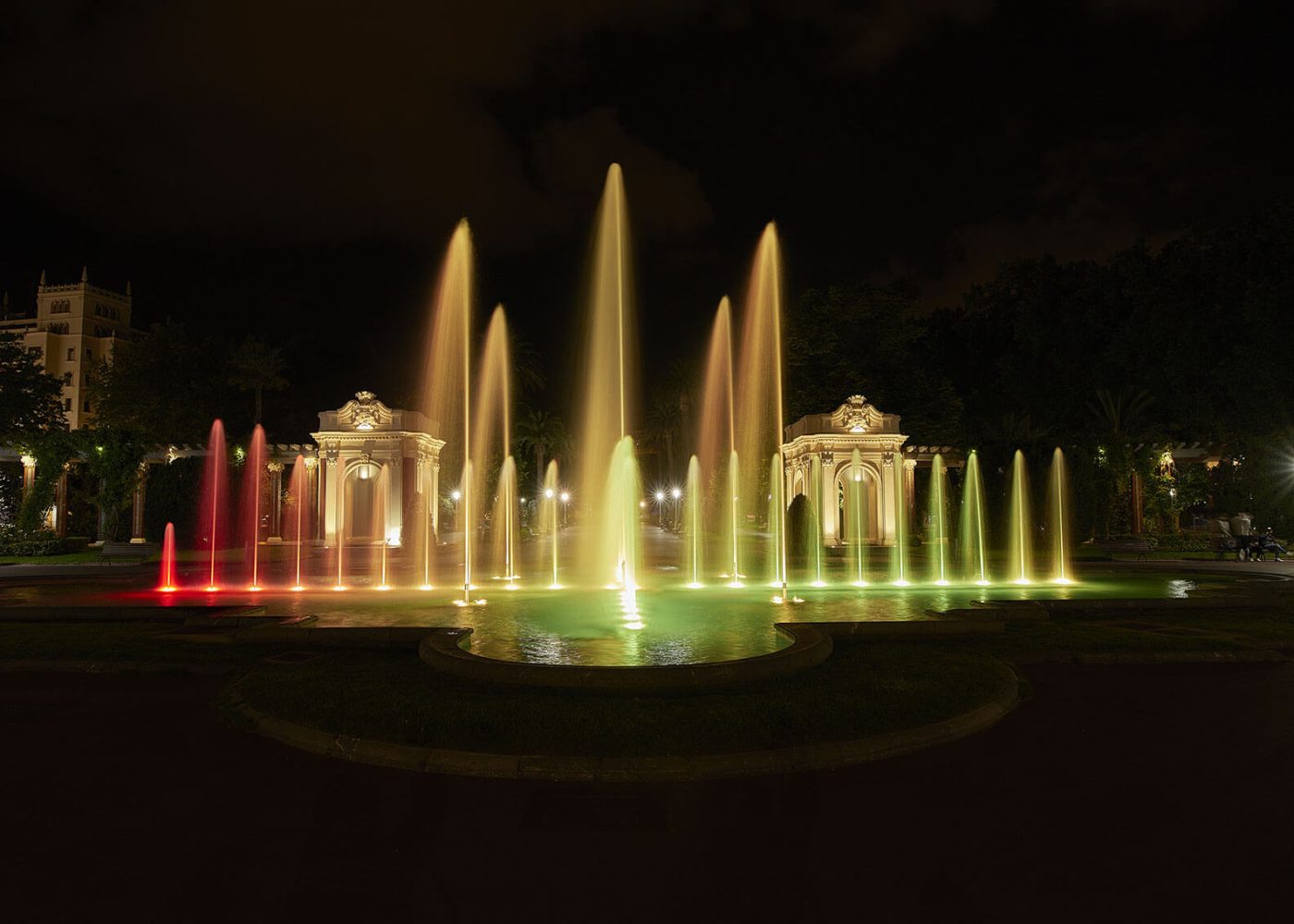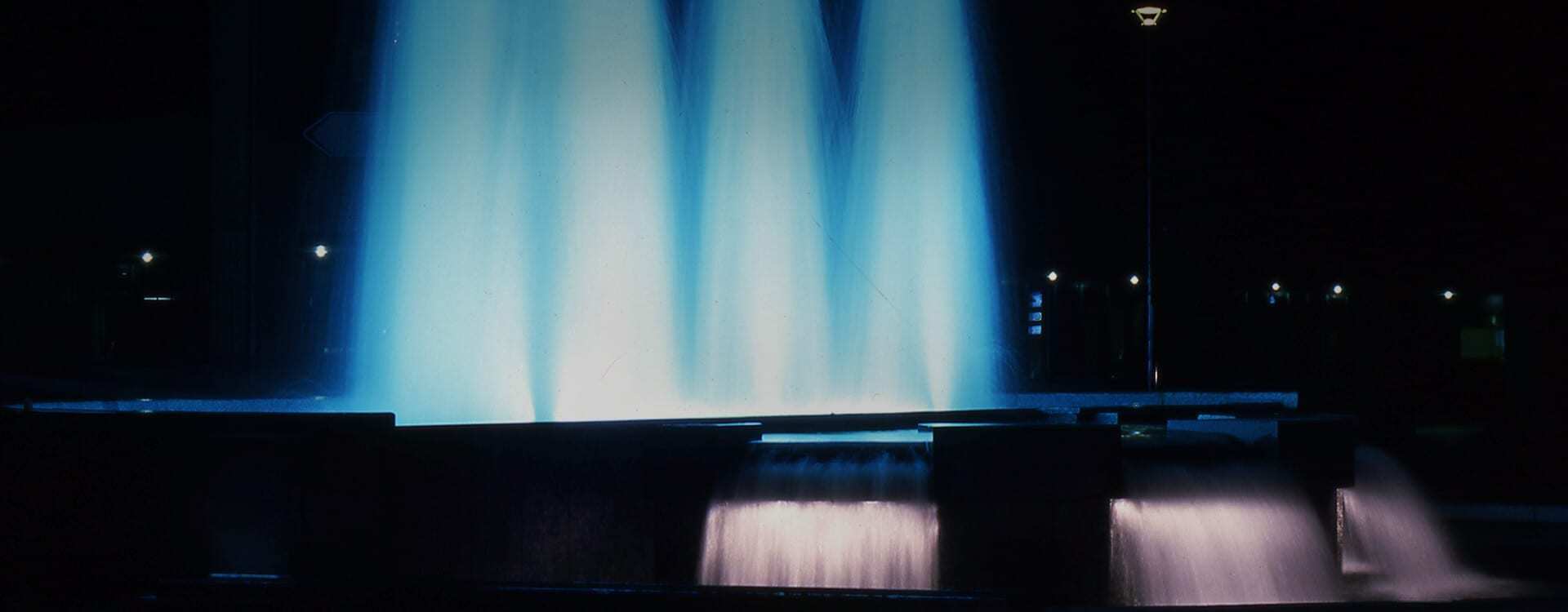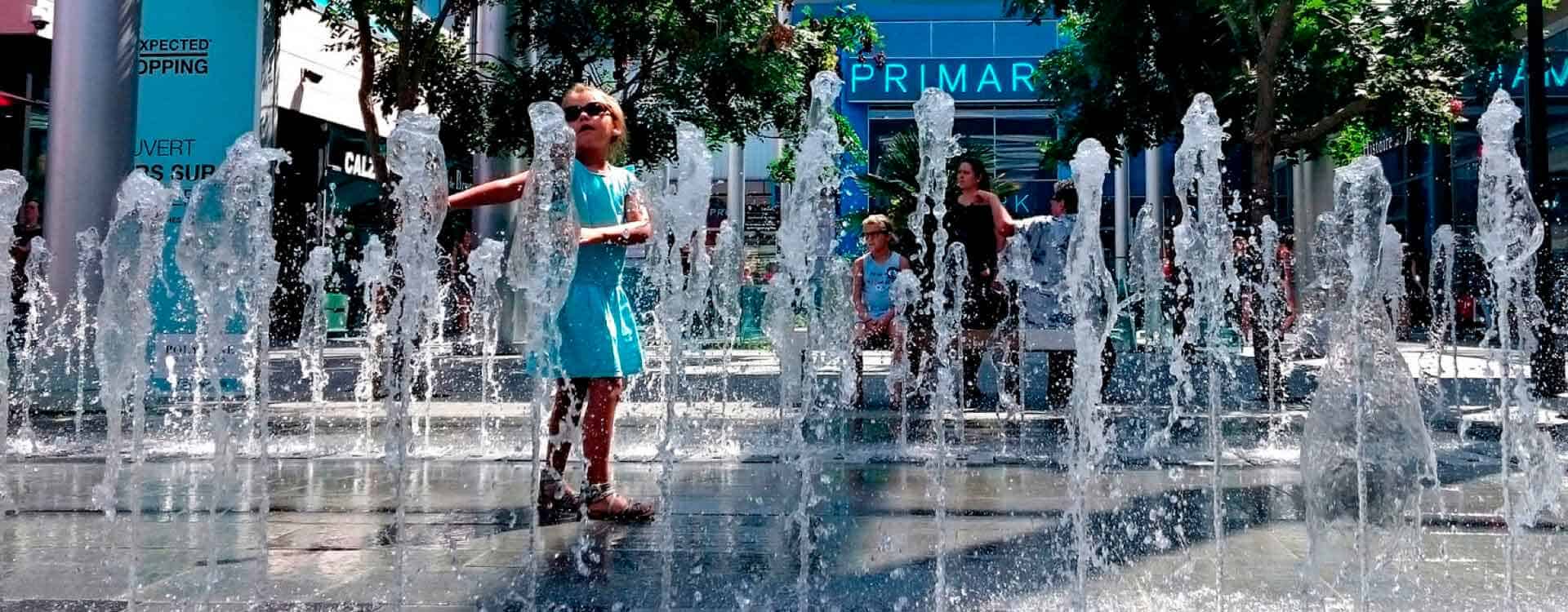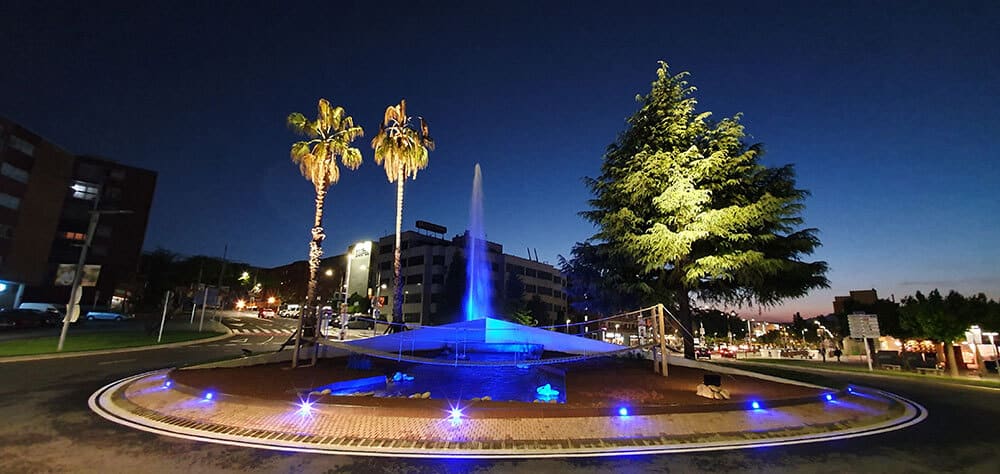Design
The design of the effects and their placement are based on the already historical shape of the fountain. The basin is in the shape of a staggered cross on whose axes the vertical effects are placed with the appropriate dimensions to fill the basin without causing the water to flow out of it. It is decided to install forty such freestanding jets, each eight metres high.
In the centre of the basin is the largest variable spout, which reaches a height of ten metres, or a bell with a diameter of four metres. Around it, forming a square, are four smaller variable jets, six metres high and three metres in diameter.
Execution
The installation of all the equipment and the programming of the effects took two months and involved the following actions:
- Installation of hydraulic and electrical components
The existing fountain systems were removed and the necessary installation steps for the new fountain installation were carried out.
Variable and vertical pumps and jets were then installed in the basin. The water treatment system was also replaced and upgraded.
From the electrical point of view, the solenoid valves and LED lights for each of the pumps were installed, as well as all the components of the technical room.
- Connection and commissioning:
After connecting the systems to the electrical panel in the technical room, the fountain is programmed with our Syncroshow® control software, which allows the status of the fountain to be monitored at all times from any device with internet access.
Thanks to this software, all the components of the fountain are programmed to act according to the time of day, weather conditions, etc. For example, the anemometer, which is an important component in this type of fountain, regulates the height of the jets according to the wind speed.
This software has a very intuitive design that allows easy modification of parameters during maintenance.
After the connection of all the components and the programming of the choreographies for the evening shows, the tests are carried out for the purpose of bringing the fountain into operation.
Sustainability
OTB prioritises sustainability in all its projects. Using materials such as stainless steel and IP68 materials, which are robust and of high quality, is an excellent choice due to their longer service life. This reduces the need for frequent replacement, which in turn reduces resource consumption and the associated environmental impact.
The focus on energy efficiency is also very commendable. By using low-power LED spotlights and adjusting the installation to operate at the minimum power required without compromising performance, energy consumption is significantly reduced. This not only benefits the environment by reducing carbon emissions, but can also generate significant savings in long-term energy costs.
The use of closed-loop water through the treatment system is another important sustainable practice. By limiting water consumption and recirculating water instead of continuously discharging it, waste is minimised and demand on water resources is reduced.
In summary, the consideration of sustainability criteria in the choice of materials, energy efficiency and responsible water management are key measures to ensure sustainability in OTB projects. These practices demonstrate a real commitment to protecting the environment and optimising resources, which is fundamental to building a more sustainable future.

